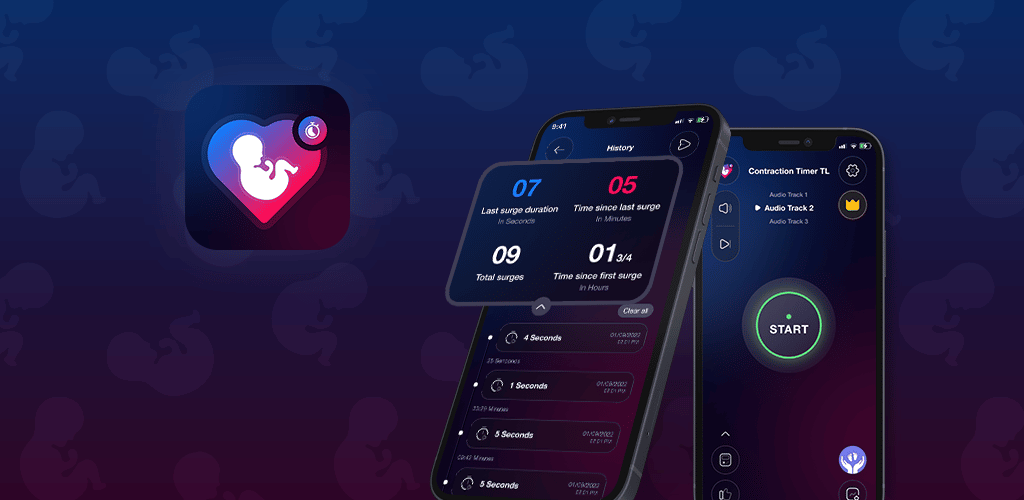All you need to know about Pregnancy Contractions
Published on October 10, 2022 – Last Updated on October 18, 2022
Contractions are the tightening and hardening of your uterus muscles. These contractions help push your baby out during labor. Most first-time moms feel them differently than women who have undergone childbirth. This is because their muscles have never been through the process of childbirth before, so they may not know what to expect. Here is everything you need to know about contractions.
1. What are Contractions?
Contractions are the periodic tightening and relaxing of the uterine muscles, which help to push the baby down the birth canal during labor. The intensity and frequency of contractions gradually increase as labor progresses.
You may have heard of Braxton Hicks’s contractions. These are also called false labor or practice contractions. They can happen anytime during your pregnancy, but they are most common in the last few weeks before your due date. They may feel like your uterus is tightening for 30-60 seconds before letting go. Early contractions tend to be irregular and infrequent.
In contrast, labor contractions are more frequent (usually 5-10 minutes apart), longer lasting (about 30-70 seconds each), and regular in pattern. They also tend to get stronger over time as labor progresses.
If this is your first baby, you may not notice any difference between early and labor contractions since they can feel very similar. However, if you’ve had a baby before, you may definitely see a difference! To start being in control of your pregnancy, make sure to use a contraction timer.
2. Early Contractions vs. Labor Contractions
Early contractions, or Braxton Hicks contractions, can begin weeks or even months before labor begins. These contractions are usually irregular and do not increase in intensity or frequency. On the other hand, labor contractions become more regular as labor progresses and eventually occur at regular intervals.
Labor contractions can be very uncomfortable and intense. Many women describe them as feeling like strong menstrual cramps. However, each woman experiences contractions differently. Some may find them mildly irritating, while others may find them intensely painful.
As labor progresses, the contractions become stronger and more frequent. They may also start to overlap, meaning that you will feel more than one contraction at a time. This can be very intense and overwhelming, especially if it is your first baby. It is essential to stay calm and focus on your breathing to help manage the pain.
If you are unsure whether you are experiencing early contractions or labor contractions, it is always best to call your doctor or midwife for advice.
3. How to Time Contractions

To time contractions, start by timing how long each contraction lasts, from the beginning of one contraction to the beginning of the next. Then, time how long it takes for the contracting muscles to relax between each contraction. This will give you an idea of how often contractions occur and how long they last.
The best and easiest way to time contractions is by using a contraction tracker app. Download it for free for iOS or Android.
When contractions start, staying calm and focusing on your breathing are important. Many women find that focusing on a mantra or a specific phrase can help to take their minds off of the pain. It is also important to drink plenty of fluids and eat light, healthy snacks to keep your energy up.
If you are in labor, your doctor or midwife will likely want to monitor your contractions. This involves attaching sensors to your belly to track each contraction’s strength, frequency, and duration. This information can help them determine how far along you are in labor and whether you need any assistance.
If you are experiencing intense, regular contractions that are gradually getting stronger, it is likely that you are in labor. Make sure to call your doctor or midwife and head to the hospital!
4. What do Contractions Feel Like?
https://youtube.com/shorts/6QV2uksIkCk
The sensation of contractions can vary depending on each individual woman’s pain tolerance level. Some women report a mild cramping sensation, while others describe it as intense menstrual cramps. Additionally, some women may feel pressure in their lower back or pelvis during contractions.
As labor progresses, the contractions become stronger and more frequent. They may also start to overlap, meaning that you will feel more than one contraction at a time. This can be very intense and overwhelming, especially if it is your first baby. It is essential to stay calm and focus on your breathing to help manage the pain.
If you are experiencing intense, regular contractions that are gradually getting stronger, it is likely that you are in labor. Make sure to call your doctor or midwife and head to the hospital!
5. When to Call Your Doctor
If you are pregnant and experiencing any vaginal bleeding or watery discharge, you should immediately call your doctor or go to the nearest emergency room. Additionally, if you have regular contractions that seem to increase in intensity or frequency, you should also contact your healthcare provider.
Read more about how to time your contractions.
6. When to Go to the Hospital
If your water breaks or you are experiencing regular contractions that are five minutes apart or less, it is time to go to the hospital, as labor has likely begun. Additionally, if you are pregnant with twins or more, you should also head to the hospital as soon as possible once labor begins.
7. Pain Management during Contractions
Various pain management techniques can be used during labor contractions, including breathing, relaxation, massage, and acupuncture. Additionally, many women opt to receive an epidural during labor, a form of regional anesthesia that numbs the lower half of the body.
Use a contraction app like Contraction Timer TL that has hypnobirthing and relaxation tracks to help you feel more comfortable during your surges.
8. Pitocin-Induced Contractions
Pitocin is a synthetic form of oxytocin, a hormone that naturally occurs in the body and helps stimulate uterine contractions during labor. Pitocin is typically only used when labor needs to be induced or augmented (strengthened). It is important to note that Pitocin-induced contractions can be much stronger than natural ones and may be more painful for some women
Conclusion
Whether this is your first baby or fifth, contractions are a totally normal part of the process—just another step on the journey toward meeting your little one! Hopefully, this overview has helped answer some of your questions about contractions. If you have any other questions or concerns, please don’t hesitate to contact your healthcare provider. Congratulations on almost completing this incredible journey…you’ve got this, mama!





